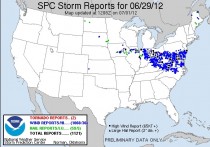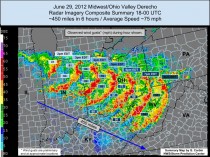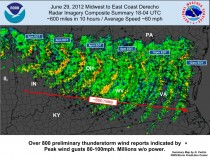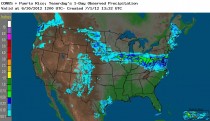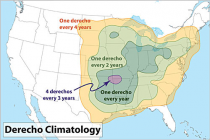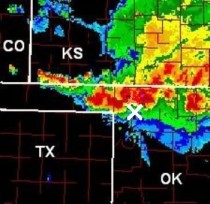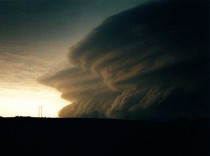C3 Headlines
Billions have been invested in climate science research by the American taxpayers with the expectations that climate scientists would produce results that would become part of the public record - but some scientists appear to be ethically-challenged

(click to enlarge, source)
Read here. It’s a great lifetime gig if one is comfortable by making a career of ripping-off the U.S. taxpayer. Just get the taxpayer to repeatedly fund your climate science “research” trips, literally from Pole-to-Pole, and then just conveniently forget to produce the scientific results in the manner required by Federal policies. And, by the way, don’t worry your pretty little head because neither the science bureaucrats, nor the appropriate Federal agencies (hmmm....the IRS?), nor any spineless politico will actually challenge your perpetual forgetfulness or your ethical and moral compass.
Steve McIntyre of Climate Audit very bluntly describes how the Thompson “scientists” have been doing this for decades and the public has nothing in return other than some basic ice core squiggle charts, like the one above.
What are they required to produce if funded by the Feds?
“...despite clear U.S. federal government policies dating back to 1991 which, on paper, require thorough data archiving by the climate community as a condition of receiving grants.”
“Full and open sharing of the full suite of global data sets for all global change researchers is a fundamental objective. As data are made available, global change researchers should have full and open access to them without restrictions on research use...”
“The data products and their metadata will be provided in a standard exchange format no later than the grant final report or the publication of the data product’s associated results, whichever comes first.”
And what did the public and science community receive instead?
“Unfortunately, the U.S. climate funding bureaucracy has been thoroughly co-opted by the climate industry and has failed to enforce regulations that, on paper, would require the Thompsons and others to archive data.”
“While Lonnie Thompson has been a frequent example at Climate Audit of a serial non-archiver, it turns out that Ellen Mosley-Thompson is even worse. Mrs Lonnie has spent her entire career in the ice core business. According to her CV, she has led “nine expeditions to Antarctica and six to Greenland to retrieve ice cores”. However, a search of the NOAA paleo archive for data archived by Mrs Lonnie shows only one data set from Antarctica or Greenland associated with her. Lest this example be taken to mar her otherwise unblemished record of non-archiving, the data was published in 1981 while she was still junior...I believe that it’s fair that she has not archived at NOAA (or, to my knowledge, elsewhere) any data from the “nine expeditions to Antarctica and six to Greenland”.
“Squiggles for 6 of Mrs Lonnie’s Greenland cores (5 PARCA and one 1989 core) and 3 of her Antarctic cores (dating back to the early 1990s) were shown in a 2006 article. None of this data has been archived.”
“The total failure of the PARCA program to archive a single d18O measurement is really quite remarkable.”
As we said, a great lifetime gig if one has no conscience or scruples.
Honestly, is it any wonder why the public has such low regard for the climate science community? Is it really that difficult for the academia and government ‘elites’ to understand why the public’s trust in science has faded in recent years when this type of crap happens and officials keep condoning these Federal “science” rip-offs?
By Joe D’Aleo
The Storm Prediction Center continued to receive damaging wind reports Saturday and upped the total for the ‘derecho’ to 1060.
The storms fed off the intense heat in the heat ridge and bowed out Friday and expanded as it crossed Ohio and West Virginia into Virginia including the nation’s capitol.
It delivered needed rains for the northern Ohio Valley and doused the extreme heat for Saturday. But a literal drop in the bucket this very dry year.
WHAT IS A DERECHO?
A derecho is a long-lived straight line wind storm. The word derecho comes from the Spanish word meaning straight. These storms are generally associated with severe thunderstorms and occur most frequently along a squall line, especially in “bowing” sections. This means that while most of the line may be straight, there will be areas that bow out. It is in these areas, where we see the strongest winds and derechos occur. Derechos are most common in the summer months, but can occur at any time of the year and at any time of the day. Derechos can travel for several hundred miles and can typically last for over six hours.
Derechos differ from typical severe thunderstorms in several ways. One, derechos move at a rate of increasing forward speed. Secondly, derechos are unusually long, typically about 250 miles in length. The maximum winds within derechos are typically in excess of 80 or even 100mph. Derechos rarely form tornadoes, most of the damage is caused by straight line winds.
One of the most famous derecho events include the Memphis Summer Storm of 2003, which is also known as Hurricane Elvis. The storm hit Memphis with winds will over 100mph killing seven and leaving over 300,000 people without power for up to two weeks.
The term derecho has been around for a long time. It was first described by Gustavus Hinrichs in 1888. The term was later revived by Robert Johns and William Hirt in 1987. Although derechos in other countries can happen, Johns and Hirt identify areas from the upper Midwest to the Ohio valley as particularly prone to these wind events. Occasionally, these storms will move into the Appalachia regions.
Dr. Ted Fujita first coined the term “bow echo” to describe the bow shaped path of mesoscale convective systems (thunderstorms). Derechos usually evolve from a bow echo formation and have become somewhat synonymous with the term “long-lived bow echo”. The storm that caused Fujita to coin the term “bow echo” had a derecho event that affected Northern Wisconsin known as the The Independence Day Derecho of 1977.
CLIMATOLOGY OF DERECHOES
THE GREAT ADIRONDACK DERECHO OF 1995 (NOAA)
THE JULY 15 1995 DERECHO THAT RAVAGED MUCH OF EASTERN NEW YORK AND WESTERN NEW ENGLAND. A DERECHO IS A WIDESPREAD AND LONG LIVED WINDSTORM THAT IS ASSOCIATED WITH A BAND OF RAPIDLY MOVING THUNDERSTORMS.
IN 1995...A LINE OF DAMAGING THUNDERSTORMS DEVELOPED IN THE NORTHERN GREAT LAKES DURING THE NIGHT OF JULY 14 AND QUICKLY STRENGTHENED AS IT MOVED INTO NORTHERN NEW YORK BY 4 AM ON JULY 15...AND THEN INTO SOUTHERN NEW ENGLAND BY 8 AM. ESTIMATED PEAK WIND SPEEDS IN EXCESS OF 100 MPH OCCURRED IN THE ADIRONDACKS AND THE STORMS THEMSELVES COVERED OVER 800 MILES (FROM ONTARIO PROVINCE TO CAPE COD) IN LESS THAN 12 HOURS...MOVING AT AN AVERAGE FORWARD SPEED OF 67 MPH.
THIS DERECHO RESULTED IN FIVE DEATHS AND 11 INJURIES AND CAUSED DAMAGE TO NEARLY ONE MILLION ACRES OF TREES IN THE ADIRONDACKS. ALSO, IT WAS ONE OF THE COSTLIEST WINDSTORMS IN EASTERN NORTH AMERICA...WITH NEARLY A HALF BILLION DOLLARS IN DAMAGES.
That ‘heat wave’ summer produced 4 derechos as outlines by NOAA here.
The Ontario-Adirondacks Derecho of July 14 and 15, 1995
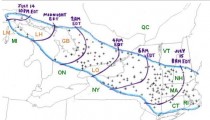
Map of the Ontario-Adirondacks Derecho (courtesy of NOAA)
The Ontario-Adirondacks Derecho got its start near the straits of Mackinac on Friday evening July 14, 1995. At the Mackinac Bridge connecting the Upper and Lower Peninsulas of Michigan, 100 mph winds were detected and sustained winds above 80 mph continued on the bridge for 10 additional minutes. After crossing the open waters of Lake Huron/Georgian Bay, the storm raced southeastward into central southern Ontario. Several brief tornadoes were reported. An F1 tornado struck the Balsam Lake Trailer Park near Kirkfield, flipping over vehicles, destroying several trailers and sending ten people to hospital with non life-threatening injuries. One trailer was thrown over 250 meters. Across the lake from the trailer park, straightline winds caused extensive damage in the cottage community of Long Point. Further east, near Peterborough, an F2 tornado hit Bridgenorth damaging or destroying 20 homes and a marina with winds estimated upward of 200 km/h (120 mph/h). To get an idea of the straight line wind damage over a wide area, a sustained wind gust of 136 km/h (84 mp/h) was recorded just north of Toronto at the Buttonville Airport, which was located on the far southern periphery of the main derecho.
Many thousands of trees were blown down across the province severing power lines, blocking roadways, and damaging homes. One person was killed, and dozens of people were injured. Eight people trapped in flipped houseboat in Pigeon Lake near Peterborough were rescued hours after the storm. Power was not restored to some affected areas for up to a week after the event. The derecho caused $53 million in damage (Canadian dollars).
The storm entered New York state at around 4 A.M. The storm slammed into the Adirondacks felling 900,000 acres (3,600 km²) of forest. The value of the loss of timber was estimated at over $200 million (1995 dollars).
The derecho passed through the Syracuse airport with a 76 mph wind gust. A parked Boeing 727 was blown into another plane. A 77 mph wind gust was recorded at Albany. It moved into New England a little after sunrise producing 70-90 mph wind gusts in several towns in Massachusetts. Fifty people were left homeless after the derecho blew the roof of an apartment building in Holyoke, Massachusetts.
The Ontario-Adirondacks Derecho was the strongest of the Derecho events of the previous days and is among the costliest thunderstorms in US/Canadian history. It caused $500 million US dollars in damage. Altogether, the four derecho events caused nearly $1 billion in damage.
Another Derecho was captured in picture by David Berry on a bow echo derecho on May 27, 2001 and posted on the SPC site. Dave was located at the big X at the time of the photo, which he appropriately named Mothership.
Like in 1995, as long as the heat ridge continues shuttling back and forth, we are subject to more ring-of-fire convection, thunderstorm complexes and yes derechos.
By the way. Joe Bastardi and I do stories like this (and videos) daily for our premium clients at Weatherbell (weatherbell.com) and our staff of 4 meteorologists provide detailed forecasts for energy, ag, insurance, marine and retail. Dr. Ryan Maue has joined us and is putting together a dynamite model product page and will do some posting on hurricanes and climate. We have a top notch former TV meteorologist and PSU grad and an energy market analyst. Please join us and help us grow to do more.
William Yeatman, Cooler Head’s Digest
D.C. Circuit Court Rejects Challenge to EPA’s Climate Regs
The federal D. C. Circuit Court of Appeals on June 26 dismissed all challenges to the Environmental Protection Agency’s December 2009 finding that greenhouse gas emissions endanger human health and welfare and therefore can be regulated under the Clean Air Act.
The three-judge panel, which included Chief Judge David Sentelle, who was appointed by President Reagan, ruled unanimously that the endangerment finding and the tailpipe rule setting emissions standards for vehicles complied with the Administrative Procedures Act and that the EPA’s implementation of the Clean Air Act is “unambiguously correct.”
The court did not rule on the merits of the “tailoring rule” and the “timing rule”, but instead dismissed the case on the grounds that none of the many plaintiffs in the combined suit has standing to sue. The petitioners lack standing because they failed to prove any injury to themselves caused by the rules.
The ruling was especially scathing in dismissing the arguments by the plaintiffs that the EPA had not made a compelling scientific case that greenhouse gas emissions pose a threat to human health and had relied too much on the dubious compilations of the U. N. Intergovernmental Panel on Climate Change. “This is how science works. EPA is not required to re-prove the existence of the atom every time it approaches a scientific question.”
The House of Representatives on April 7, 2011 voted 255 to 172 to overturn the endangerment finding. The Senate defeated a similar provision by a 50-50 vote on April 6, 2011.
My CEI colleague Marlo Lewis discusses attorney Peter Glaser’s analysis of the court ruling here.
Regional Cap-and-Trade in West Dwindles to One Participant
In 2007, the Western Climate Initiative was formed by seven States and four Canadian provinces, in order to develop a regional cap-and-trade energy rationing scheme. Since then, Arizona, New Mexico, Washington, Oregon, Montana, Utah, British Columbia, Manitoba, and Ontario have dropped out, leaving only California and Quebec working towards a launch of the WCI cap-and-trade this November. Yesterday, however, Quebec regulators announced that the Province would not be ready until Spring 2013, at the earliest. That means that California will have to go it alone. According to a report issued recently by Manufacturers and Technology Association, California’s cap-and-trade scheme will cost industry between $3.4 billion and $7.8 billion each year.
EPA Regs Threaten Texas with Blackouts
The Texas Public Utilities Commission this week approved a 50 percent increase in electricity rates that utilities can charge during times of peak demand. The measure is intended to improve the reliability of the state’s electricity grid, which has been rendered vulnerable to rolling blackouts by two forces: (1) EPA regulations that are shutting down coal-fired power plants and (2) the state government’s support of mandates and subsidies for intermittent, unreliable wind power.
Pickens Plan, RIP
The chief House sponsor of the T. Boone Pickens Payoff Plan, Representative John Sullivan (R-Okla.) was defeated by political newcomer Jim Bridenstine in Oklahoma’s Republican primary elections on June 26. As my CEI colleague Brian McGraw notes in a post on GlobalWarming.org, the major policy disagreement between the two candidates was over Sullivan’s bill to provide billions of dollars of taxpayer subsidies to billionaire oilman T. Boone Pickens.
Here is the Tulsa World’s description of a recent campaign debate between Sullivan and Bridenstine: “On only one issue, energy policy, did Sullivan and Bridenstine substantially disagree. Sullivan touted his bill to promote natural gas vehicle fuels, while Bridenstine supports an alternative proposal. Bridenstine calls Sullivan’s NATGAS Act a ‘big-government’ boondoggle because it creates a short-term subsidy to convert vehicles to natural gas. ‘We ought not let Washington, D.C., control free markets with tax subsidies,’ he said.”



